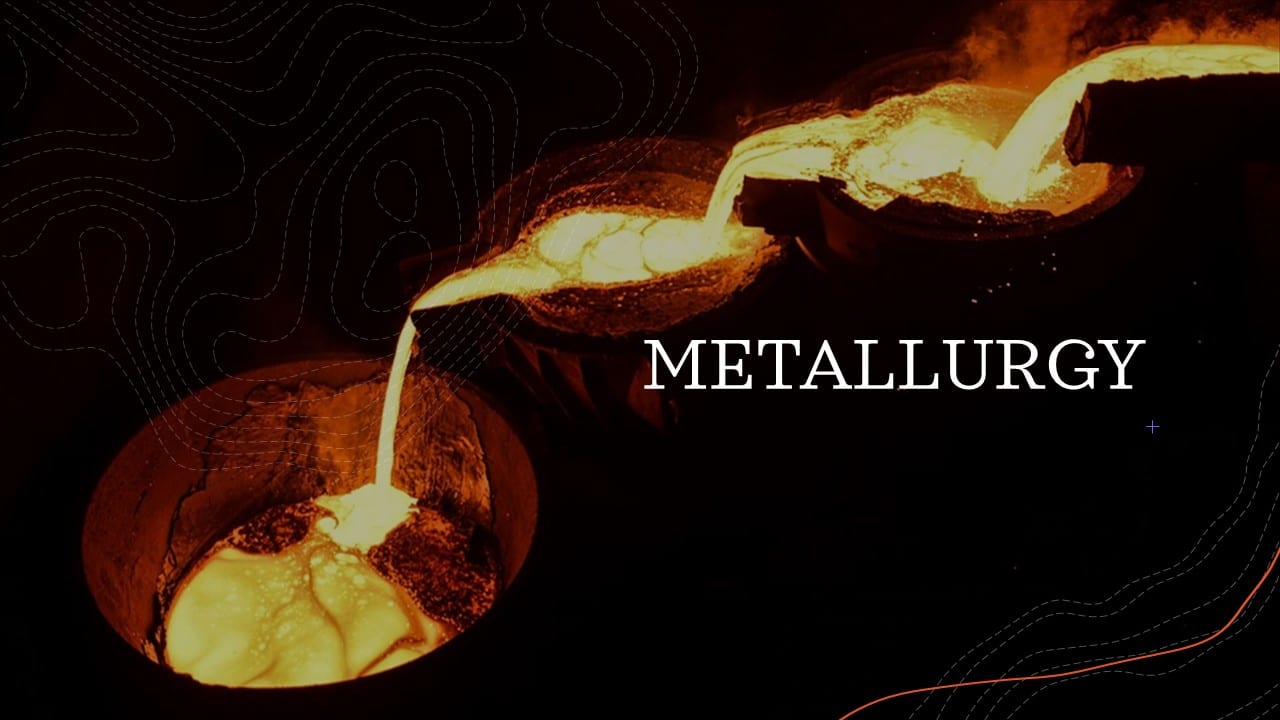STD X – METALLURGY – EINSTEIN
About Course
In this section will learn the following chapters:
1.introduction
2.comparison of metals and non-metals
3.activity series of metals
4.corrosion, extraction of metals-1
5.extraction of metals -2
6.extraction of aluminium
7.use of metals and alloys
Last Updated:December 25, 2023
0 (0 Ratings)
Share Course
Page Link
Share on social media

Description
Metals and Non-Metals.
Elements can be categorised in to metals and non-metals.
Metallurgy deals with the extraction of metals from their ores and purify it for use. A substance called flux is added to the ore to take out the impurities.
Metals are the elements that have an inclination to lose electrons and form positively charged ions. Most of elements found in our environment are metals.
Metals are positioned on the left and middle of the modern periodic table.
The extreme left of the periodic table consists of the alkali metals followed by alkaline earth metals, transition metals. Inner transition metals are positioned below the periodic table in two rows.
Non-metals are elements that have an inclination to accept electrons to form negatively charged ions.
Reactivity series
As mentioned in the introduction, the activity series of metals is a list of metals ranked in order of decreasing reactivity to displace hydrogen gas from water and acid solutions.
Taking non-metal hydrogen as the reference, metals placed below hydrogen in the activity series cannot replace hydrogen from the diluted acids. On the other hand, the metals placed above hydrogen in the activity series can replace the other metals below from its salt solution.
Extraction of Metals based on the Activity series
Metals occur naturally as carbonates, sulphides, oxides or halides in the earth’s crust and these are called minerals. If it is economically viable to extract the metal from the mineral it is called an ore. Thus all ores are minerals but all minerals are not ores.
Use of Metals and Alloys
Metals are the elements that have the inclination to lose electrons and form positively charged ions. An alloy is a homogeneous(meaning similar) metallic solution comprised of two or more elements.
Free
Free
Free access this course
-
LevelIntermediate
-
Total Enrolled5
-
Last UpdatedDecember 25, 2023
Hi, Welcome back!
Material Includes
- 🔥 Live Interactive classes with in-class doubt solving
- ⭐ Weekly Test and Quiz with instant tracking for progress
- ⚙️ Revision of the course after testing
- 👋 Fortnightly Parents and Tutor interactions
- 🌷 Expert monitoring of student's learning progress
- 👨👩👧👧 Daily communication over call, whatsapp and mail
- 💻3 hours on-demand video
- ✍4 downloadable resources
- ⌛Access for entire Academic Year
- 📱Access on mobile and Desktop
- 📋Assignments and review of the same
- 💡Tests and Correction by Board paper checkers
- 🏅Certificate of completion and Live tracking with Grade book
Course Duration:
0
Course level:Intermediate
Enrolled:5
About Course
In this section will learn the following chapters:
1.introduction
2.comparison of metals and non-metals
3.activity series of metals
4.corrosion, extraction of metals-1
5.extraction of metals -2
6.extraction of aluminium
7.use of metals and alloys
Course Curriculum
METALLURGY- PHYSICAL CLASS – 27 SEPTEMBER 2023
-
METALLURGY- PHYSICAL CLASS – INTRODUCTION
15:21 -
METALLURGY – PHYSICAL CLASS – REDUCTION OF METAL SULPHIDES OXIDES
14:32 -
METALLURGY – PHYSICAL CLASS – STEPS INVOLVED UP TO CHEMICAL REDUCTION
23:07 -
METALLURGY – PHYSICAL CLASS – EXTRACTION OF METALS – INTRODUCTION
13:48
Student Ratings & Reviews

No Review Yet

